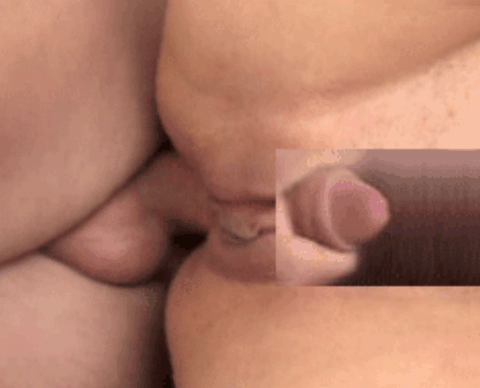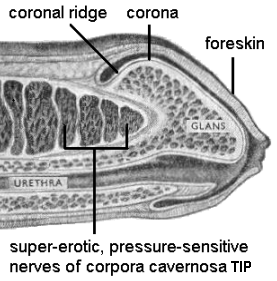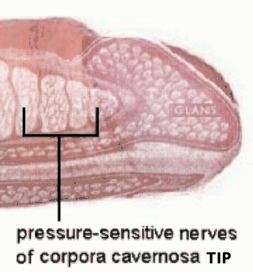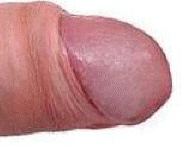When the natural (uncircumcised) penis thrusts inward, the foreskin slides backwards, allowing the vaginal walls to brush against the highly erogenous touch-sensitive nerves of the frenulum, foreskin and foreskin inner lining, causing these nerves to fire off strong sensations of pleasure. But after these nerves have fired off, the penis senses a reduction in pleasurable feelings. So it stops the inward thrust and begins its outward stroke. During the outward stroke, the foreskin’s outer layer slides forward to cover up the nerves of its inner lining. And the inner lining itself covers the frenulum. Once covered, these highly erogenous touch-sensitive nerves of the upper penis are allowed to rest and recharge.
PLEASURE FROM PRESSURE-SENSITIVE NERVES During the outward stroke, too, the foreskin moves forward on the penis shaft and it bunches up behind the coronal ridge (sometimes it may roll forward, somewhat, over the corona, depending upon the length of the stroke). This bunching up by the foreskin applies pressure against the glans' corona and the coronal ridge. This pressure radiates down interiorly into the super-erotic, pressure-sensitive nerves of the corpora cavernosa (cc) TIP.
|
|||||||||||||||||||
 |
|||||||||||||||||||
|
Because this upper area of the penis is so localized with super-erogenous nerves, it only has to travel a short distance to excite one set of nerves (touch-sensitive) or the other (pressure-sensitive). When the natural penis has finished its inward thrust, it doesn’t have to withdraw very far to receive pleasure on its outward stroke. When finished with its outward stroke, it doesn’t have to move forward very far to receive pleasure on its inward thrust. Consequently, it uses short thrusting strokes, which allow it to quickly revisit each pleasure sensation in a consistent rhythm that the woman needs to build her to orgasm. Short thrusting strokes allow the natural penis to stay deep within the vagina, thereby keeping the man’s pubic mound in close and frequent contact with the woman’s clitoral mound, which receives pleasure whenever the two mounds touch or press together. (See video below.)
In the nervous system, stronger sensations override lesser sensations. For example, if you were suffering from a toothache and were to accidentally bang your thumb with a hammer, you would notice that the pain in your thumb could be so strong you’d lose awareness of the pain in your tooth. In much the same way, the upper area of the natural penis dominates the brain’s attention so strongly it becomes the primary focus of sexual pleasure. There is, however, a secondary area of pleasure located at the base of the penis and in the adjoining tissue of the pubic mound, and it contains many pressure-sensitive nerves that become aroused when the man’s pubic area is pressed against the woman’s genitals, clitoris and pubic mound. The pressuring of these two areas against one another becomes more frequent as intercourse progresses because the woman instinctively draws the man in closer in order to satisfy her innate desire for the penis to remain deep within her and to pick up more stimulation against her clitoral mound. The man also draws his pubic area in closer because the act of pressing his pubic mound/pelvic area against her pubic mound/pelvic area and genitalia enhances his pleasure since it augments excitation to the pressure-activated nerves in this region. Eventually, their pubic mounds/genitals are pressing and pressure-pleasuring each other in either a rapid rhythmic touching, a gentle bumping, or a soft grinding motion. At the same time, these short thrusting actions continue to excite both the touch-sensitive and pressure sensitive nerves in the penis upper area. All these excitations in the penis combine to create the ideal thrusting movements that pleasure the female and bring her to orgasm, just as nature designed it. |
|||||||||||||||||||




